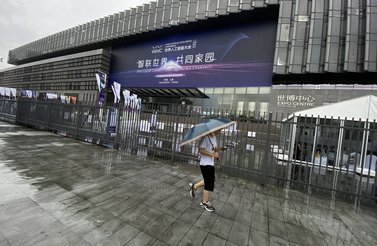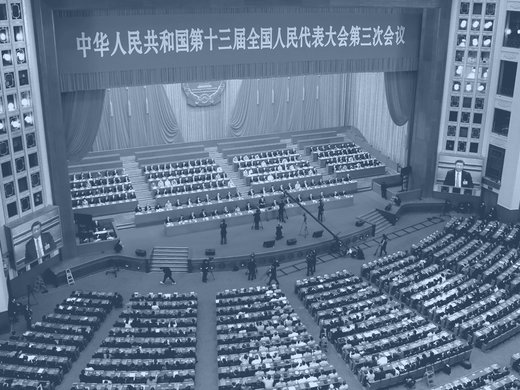A familiar line is likely to appear in China’s next five-year plan: the nation aims to be a global leader in technology development. From October 26 to 29, at its fifth plenary session, the Central Committee of the Chinese Communist Party will draft a new five-year plan, which acts as China’s major policy blueprint for economic and social development and is expected to be fueled by digital, smart and innovative technologies. President Xi Jinping has (unusually) made remarks at least seven times since July that reference a national aim to master core technologies.
President Xi is not the first Chinese leader to call for innovation related to core technologies; as early as the 1990s, other top leaders began to stress that China must rely on its own innovation for strategic and fundamental technologies to bolster economic growth and national security. Since 2006, China has defined a series of core technologies to master and made strategic plans to do so. Despite noticeable progress in some areas, China still lags behind in most of these core technologies and related advanced manufacturing, such as high-end chips; basic software and operating systems; high-end precision manufacturing equipment, for example, machine tools; key equipment and materials for chip making; and aircraft engines.
During his tenure, Xi has likely felt a greater sense of urgency, given the increasingly harsh tech bans that China has faced from the United States during the Trump administration. The ZTE event in 2018 and the Huawei ban in the following years acted as China’s Sputnik moment, deflating the bubble of its fast-growing digital economy and cracking the facade of the high-tech boom it had been enjoying since 2015, which had been fostered by the success of e-commerce, online banking and mobile payment platforms developed by internet giants such as Alibaba and Tencent. As a result, Chinese leaders learned the vulnerability of China’s surging digital economy the hard way. Tech elites lamented that China’s prosperity and tech power, in the absence of some solid strength in microchips and operating systems, were “built on sand.”
China’s previous efforts to excel in technology development were non-starters because of the unrealistic, impatient and inconsistent catch-up strategies.
President Xi has since urged China’s science and technology community to work harder to master the core technologies so as to avoid ‘being strangled’ technologically by Western advanced industrial countries, in particular, the United States. The head of the Chinese Academy of Sciences, the top science institution in China, pledged in September to deploy research on these core technologies.
Topping China’s list of core technologies to master are integrated circuits (IC, or semiconductor chips). The sought-after technology, however, has long been China’s Achilles heel since the 1990s while other nations have led global IC development. Further arrangements for making breakthroughs in core technologies, particularly next-generation semiconductors, are expected to be made in the new five-year plan. In August, the State Council updated the preferential policies, which include further tax breaks and financing arrangements to support the IC industry.
China generally lags two to three generations behind the leading economies in terms of chip manufacturing. Catching up could take a decade, according to optimistic estimates, and only if a consistently large amount of investment in capital, research and development (R&D), and talent can be guaranteed.
Given decades of failed attempts, what chance does China have at mastering core technologies this time around? Simply put: not much. China’s previous efforts to excel in technology development were non-starters because of the unrealistic, impatient and inconsistent catch-up strategies. Roadblocks are common within China’s bureaucracy-controlled science and technology research system and state-owned enterprise (SOE)-dominated manufacturing industry. Often, research findings serve government officials and executives (and then their opportunities for promotion), restricting China’s capacity for genuine innovation. The system tends to prioritize short-term projects while neglecting R&D and innovation; wastes funds on low-level and redundant research findings; focuses on quantity of research (over quality of findings); and fails to build the link between academic research and industry. To make it worse, a decades-long swing between the market-oriented approach for technology acquisitions and independent indigenous innovation for technological breakthroughs has diverted attention and the large investments needed from the core technologies.
These long-standing problems are not insignificant in the development of China’s IC industry. Unlike other advanced manufacturing industries, the IC sector is highly competitive, highly talent and capital intensive, has a high cost of trial and error, and evolves quickly. These characteristics don’t mix well with a government-dominated approach to innovation that seeks shortcuts and shows little room for fundamental R&D, and no tolerance for failure. Worryingly, the new five-year plan is likely to feature a possible “great leap forward” style investment spree for chips making, which risks squandering tons of money on low-tech chips instead of on R&D and real innovation. Criticism and objections from the outside world are other risks; other aggressive plans such as “Made in China 2025” have provoked the criticism that China’s state-driven model was discriminatory, and led to countermeasures such as stricter tech bans.
Regardless of what appears in China’s next five-year plan, its potential as a technological powerhouse depends on the innovation and progress of its existing, leading private companies, which are not fettered by the deeply rooted problems in the state-dominated research system and business model. These companies — such as Tencent, Alibaba, Baidu, JD.com, Huawei, Xiaomi and ByteDance — are China’s best shot at gaining a competitive edge on Western countries. They have moved rapidly in frontier fields such as AI, big data, IoT, cloud computing and blockchain. A few real breakthroughs in the IC industry were also made by private companies such as HiSilicon owned by Huawei.
China is seeking cooperation with some private companies on innovation on these frontier technologies, but it is critical that the government act wisely in engaging with the private sector in the years to come. Deeper involvement in the private giants’ businesses risks introducing the roadblocks seen in China’s state-dominated research. Rhetorical and substantial endorsement for its giant private companies on the international stage could also put these companies into suspicious and unfavourable positions, as the Huawei case showed. China must, instead, focus on building substantive cooperation with Western countries and further opening its economy, to create an environment more disposed to its national champions’ overseas success.




